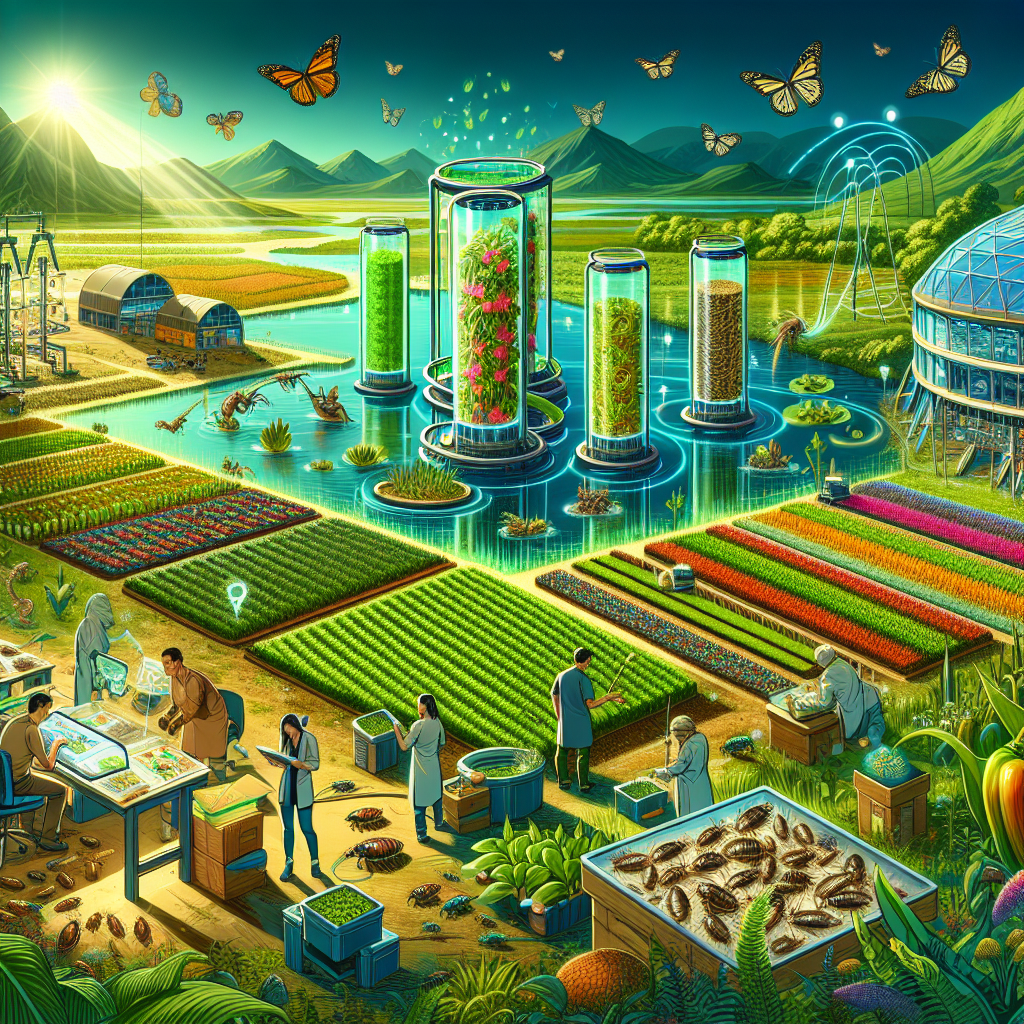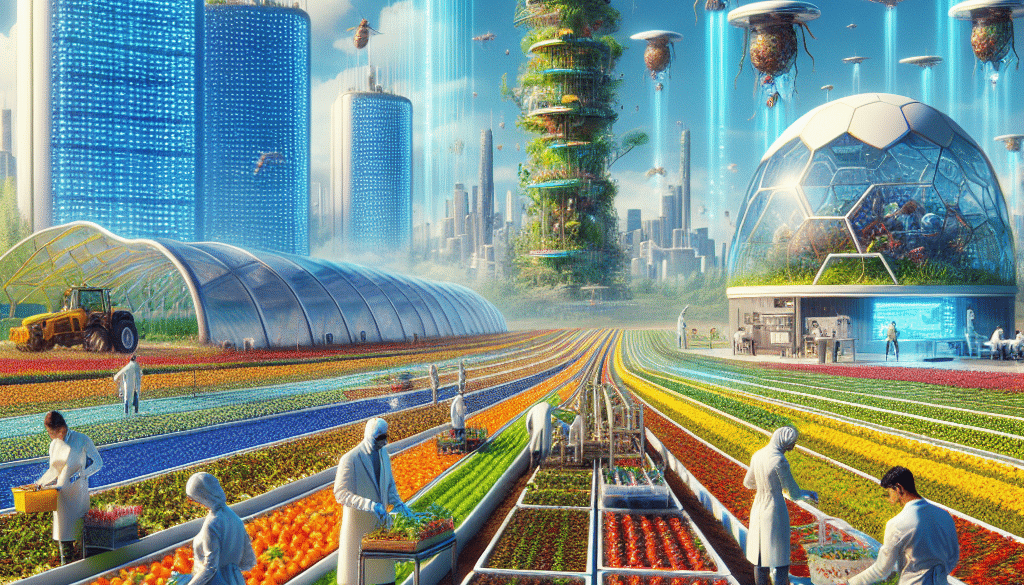Alternative Food Sources Expanding Its Growth Into the Ecospace
-
Table of Contents
- Alternative Food Sources: Pioneering Growth in the Ecospace
- The Rise of Alternative Proteins
- Edible Plants and Fungi as Nutrient Powerhouses
- Technological Innovations in Food Production
- Consumer Acceptance and Market Trends
- Challenges and Opportunities
- Conclusion
- Discover ETprotein’s Sustainable Protein Products
Alternative Food Sources: Pioneering Growth in the Ecospace

The global food landscape is undergoing a significant transformation as the demand for sustainable and environmentally friendly food sources surges. With the world’s population projected to reach 9.7 billion by 2050, the need for alternative food sources that can provide adequate nutrition without further straining our planet’s resources has become more pressing than ever. This article explores the burgeoning growth of alternative food sources and their potential impact on the ecospace.
The Rise of Alternative Proteins
Alternative proteins have emerged as a frontrunner in the quest for sustainable food sources. These proteins are derived from plants, insects, algae, or lab-grown cultures, offering a lower environmental footprint compared to traditional animal-based proteins. The market for alternative proteins is expected to reach $17.9 billion by 2025, indicating a robust growth trajectory.
- Plant-based proteins, such as soy, pea, and rice proteins, are gaining popularity due to their health benefits and lower environmental impact.
- Insect protein, sourced from crickets, mealworms, and other edible insects, is rich in nutrients and requires less land and water to produce.
- Algae-based proteins, including spirulina and chlorella, are high in protein content and can be cultivated in a variety of environments.
- Cultured or lab-grown meat is being developed to mimic the taste and texture of animal meat without the associated ethical and environmental concerns.
Edible Plants and Fungi as Nutrient Powerhouses
Edible plants and fungi are also gaining attention as alternative food sources. These include lesser-known grains, vegetables, and mushrooms that are nutrient-dense and can be grown with minimal environmental impact.
- Ancient grains like quinoa, amaranth, and teff are drought-resistant and have a high nutritional profile.
- Underutilized vegetables, such as moringa and jackfruit, can thrive in challenging climates and provide essential vitamins and minerals.
- Edible fungi, particularly mushrooms, are versatile and can be cultivated on agricultural waste, turning byproducts into valuable food sources.
Technological Innovations in Food Production
Technological advancements are playing a pivotal role in the expansion of alternative food sources. Innovations such as vertical farming, precision fermentation, and 3D food printing are revolutionizing the way we produce and consume food.
- Vertical farming allows for the cultivation of crops in stacked layers, optimizing space and reducing water usage.
- Precision fermentation utilizes microorganisms to produce specific proteins and nutrients, enabling the creation of novel food products.
- 3D food printing offers the potential for customized nutrition and waste reduction by printing food from various edible ingredients.
Consumer Acceptance and Market Trends
Consumer acceptance is critical for the success of alternative food sources. As awareness of the environmental and health benefits of these foods grows, so does their popularity. The market for meat substitutes, for example, is projected to grow at a CAGR of 15.8% from 2020 to 2027.
- Increased awareness of the environmental impact of traditional animal farming is driving consumers towards plant-based alternatives.
- The health and wellness trend is encouraging people to incorporate more plant-based proteins and nutrient-rich foods into their diets.
- Food allergies and intolerances are leading consumers to seek out alternative protein sources that are hypoallergenic.
Challenges and Opportunities
While the growth of alternative food sources presents numerous opportunities, there are also challenges to overcome. These include scaling up production to meet global demand, ensuring affordability, and navigating regulatory hurdles.
- Scaling production while maintaining sustainability is a key challenge for alternative food producers.
- Price parity with traditional food sources is essential to make alternative foods accessible to a broader population.
- Regulatory approval for new food sources, particularly lab-grown meats, is a complex process that varies by region.
Conclusion
The expansion of alternative food sources into the ecospace is a testament to human innovation and our commitment to finding sustainable solutions to global food challenges. With continued research, technological advancements, and consumer support, these alternative sources have the potential to reshape our food systems and contribute to a healthier planet. The key takeaways from this exploration are the importance of diversifying our protein sources, leveraging technology for sustainable food production, and fostering consumer acceptance of novel foods.
Discover ETprotein’s Sustainable Protein Products
If you’re interested in incorporating alternative proteins into your diet or product offerings, ETprotein is a company worth considering. Their range of organic bulk vegan proteins and L-(+)-Ergothioneine (EGT) products are non-GMO, allergen-free, and come with a neutral taste, making them an excellent choice for various applications.
ETprotein’s commitment to quality and sustainability positions them as a valuable partner for those looking to embrace the future of food. Whether you’re in the nutraceutical, pharmaceutical, or food and beverage industry, ETprotein’s products can help you meet the growing demand for eco-friendly and health-conscious options.
About ETprotein:
ETprotein, a reputable protein and L-(+)-Ergothioneine (EGT) Chinese factory manufacturer and supplier, is renowned for producing, stocking, exporting, and delivering the highest quality organic bulk vegan proteins and L-(+)-Ergothioneine. They include Organic rice protein, clear rice protein, pea protein, clear pea protein, watermelon seed protein, pumpkin seed protein, sunflower seed protein, mung bean protein, peanut protein, and L-(+)-Ergothioneine EGT Pharmaceutical grade, L-(+)-Ergothioneine EGT food grade, L-(+)-Ergothioneine EGT cosmetic grade, L-(+)-Ergothioneine EGT reference grade and L-(+)-Ergothioneine EGT standard. Their offerings, characterized by a neutral taste, non-GMO, allergen-free attributes, with L-(+)-Ergothioneine purity over 98%, 99%, cater to a diverse range of industries. They serve nutraceutical, pharmaceutical, cosmeceutical, veterinary, as well as food and beverage finished product distributors, traders, and manufacturers across Europe, USA, Canada, Australia, Thailand, Japan, Korea, Brazil, and Chile, among others.
ETprotein specialization includes exporting and delivering tailor-made protein powder and finished nutritional supplements. Their extensive product range covers sectors like Food and Beverage, Sports Nutrition, Weight Management, Dietary Supplements, Health and Wellness Products, and Infant Formula, ensuring comprehensive solutions to meet all your protein needs.
As a trusted company by leading global food and beverage brands and Fortune 500 companies, ETprotein reinforces China’s reputation in the global arena. For more information or to sample their products, please contact them and email sales(at)ETprotein.com today.












